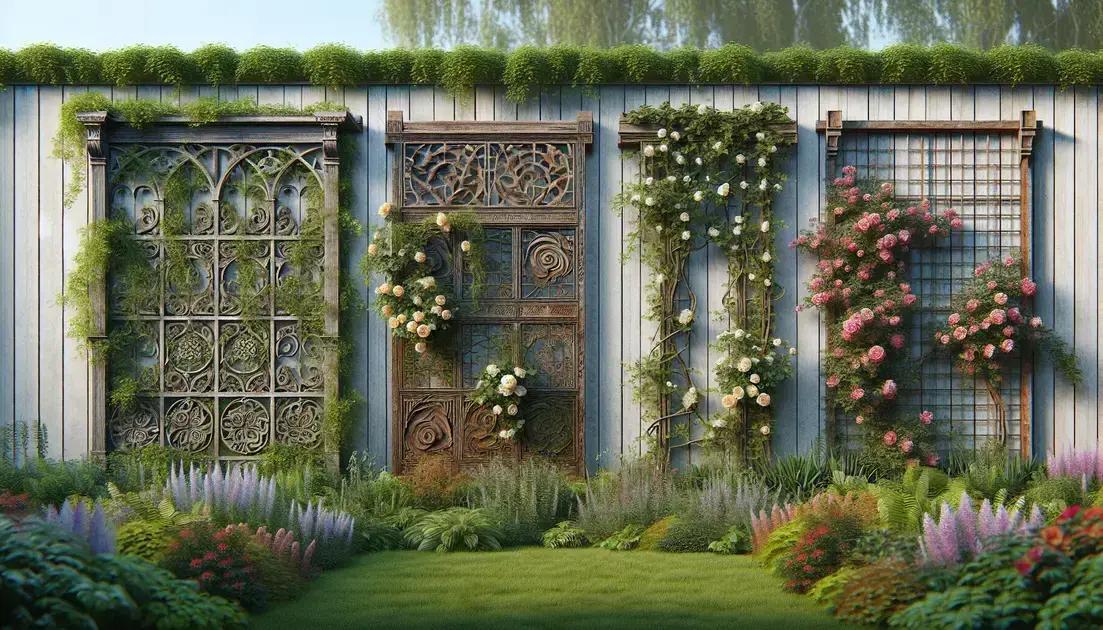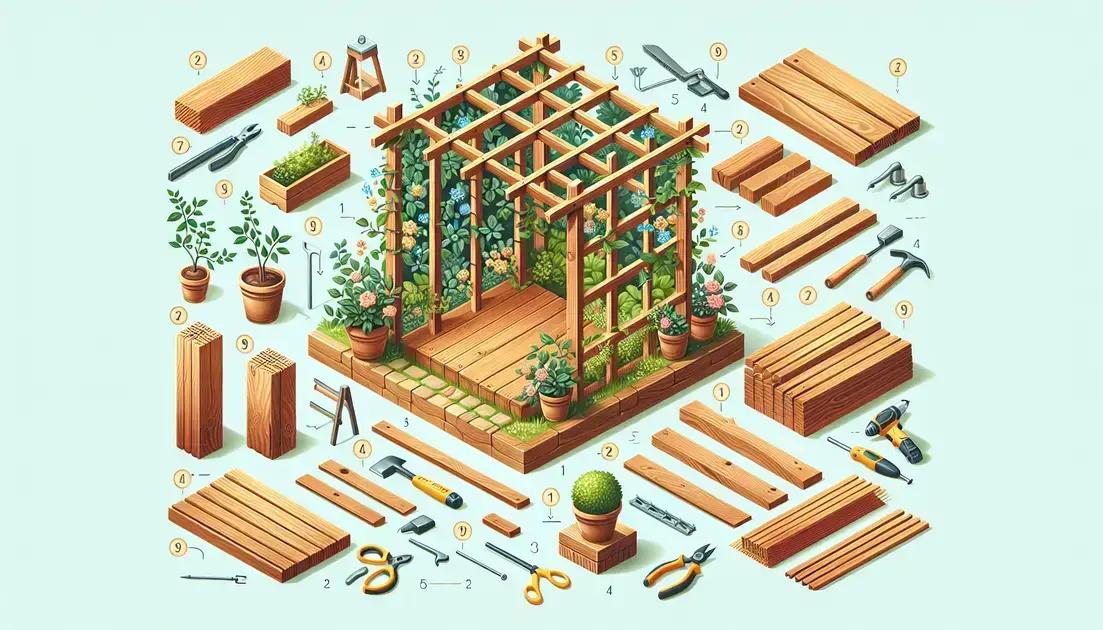A DIY trellis can be easily built using materials like wood, metal, or vinyl, providing essential support for climbing plants while enhancing your garden’s aesthetic.
DIY trellis projects can transform your garden, providing essential support for climbing plants. Have you ever wondered how to enhance your garden’s vertical space while adding beauty? Let’s dive into making your own!
Choosing the right materials for your DIY trellis

Choosing the right materials for your DIY trellis is crucial to ensure durability and effectiveness. Various materials can be used, and it’s essential to understand their pros and cons.
Wood
Wood is a popular choice for trellises because it’s readily available and easy to work with. When selecting wood, consider using cedar or redwood, as these types are naturally resistant to decay. Make sure to treat the wood to enhance longevity.
Metal
Metal trellises offer strength and stability. Options like aluminum or wrought iron can withstand harsh weather conditions and provide a modern aesthetic to your garden. However, be cautious of rust; consider painting or coating the metal for protection.
Vinyl
Vinyl trellises are a low-maintenance alternative. They resist fading and rotting, making them an excellent choice for long-term use. Additionally, vinyl comes in various styles and colors, allowing for customization.
Composite Materials
Composite materials, made from a blend of wood fibers and plastic, combine the best of both worlds. They offer the appearance of wood while being resistant to moisture and insects. This is an excellent choice for those looking for sustainability and durability.
Choosing the right materials also depends on the plants you intend to support. Consider their weight, growth habits, and how much sunlight they require. With the right materials, your DIY trellis will not only be functional but also a beautiful addition to your garden.
Step-by-step guide to building a sturdy trellis

Building a sturdy trellis is a rewarding DIY project. Follow these steps to create a reliable support system for your climbing plants.
Step 1: Gather Your Materials
Before you start, make sure you have all the necessary materials. You will need wood (cedar or redwood are great options), screws, a saw, and a drill. Don’t forget gloves and safety goggles!
Step 2: Measure and Cut
Decide on the size of your trellis. Standard dimensions might be 6 feet high and 4 feet wide. Use your saw to cut the wood into the needed pieces: two vertical posts and several horizontal slats.
Step 3: Assemble the Frame
Start by attaching the horizontal slats to the vertical posts using screws. Space the slats evenly, ensuring they will support your plants effectively. A level can help ensure everything is straight.
Step 4: Secure the Trellis
Once your frame is assembled, it’s time to secure the trellis in the ground. Dig a hole deep enough for the vertical posts to stand firmly. Fill the hole with soil, ensuring the trellis is upright and stable.
Step 5: Add Finishing Touches
To enhance the look of your trellis, consider treating the wood with a weather-resistant stain or paint. This will not only provide a nice finish but also protect your trellis from the elements.
Finally, allow your trellis to dry completely before introducing any plants. With these steps, you’ll have a sturdy and attractive support for your climbing flowers or vegetables.
In summary, building your own DIY trellis is an enriching project
With the right materials and clear steps, you can create a sturdy support for your climbing plants. Remember to choose materials that match your garden style and the needs of your plants.
As you follow the step-by-step guide, the result will not only enhance your garden’s beauty but also provide essential support for your plants to thrive.
Now that you have the knowledge, it’s time to roll up your sleeves, gather your materials, and start building your perfect trellis.
FAQ – Frequently Asked Questions about DIY Trellis Building
What materials are best for building a DIY trellis?
Wood, metal, vinyl, and composite materials are all great choices. Cedar and redwood are ideal for wood, while aluminum is good for metal.
How tall should my trellis be for climbing plants?
A standard height for a trellis is around 6 feet, but you can adjust it based on the type of plants and your garden’s layout.
Do I need to treat the wood used for my trellis?
Yes, treating the wood with a weather-resistant stain or sealant will help it last longer and prevent decay.
How can I ensure my trellis is stable?
Make sure to dig deep enough holes for the vertical posts and fill them well with soil to secure the structure.
Can I paint my trellis?
Absolutely! Painting your trellis can add a decorative touch and protect the material from the elements.
What climbing plants work best with a trellis?
Popular options include cucumbers, peas, and flowering vines like morning glory or clematis, which thrive when supported by a trellis.
